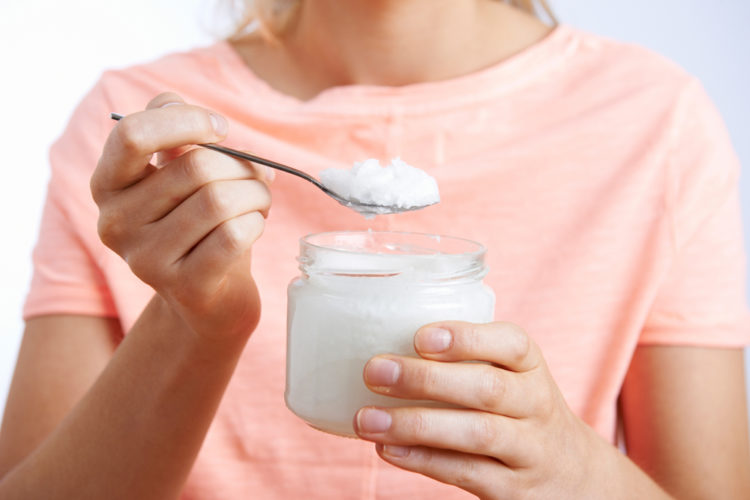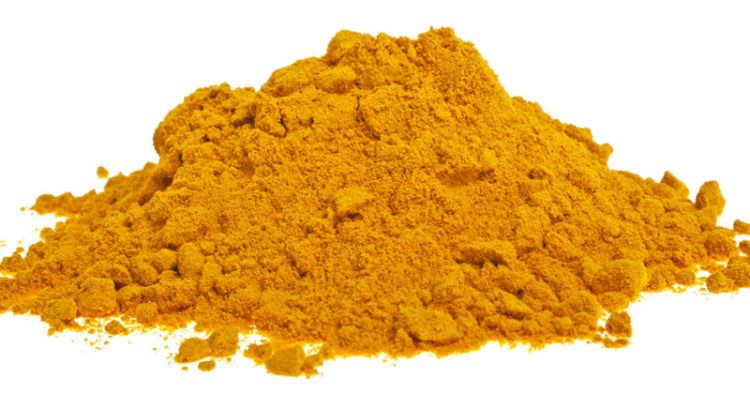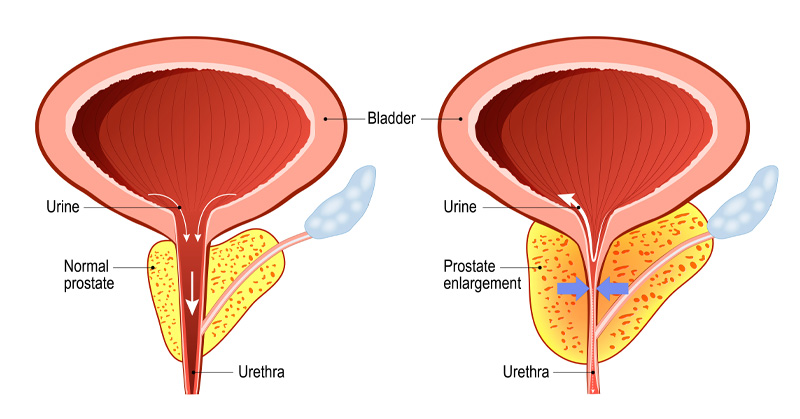Hyperplasia is a condition characterized by an abnormal overgrowth of cells. When you hear this, you may think “cancer” right off the bat, and for good reason. Abnormal cell growth can occur in different parts of the body, including the prostate, breast tissue, and uterus. Unfortunately, inaccurate information about hyperplasia is common.
While hyperplasia treatment looks at a whole body approach, it is important to understand how hyperplasia occurs within the body. Therefore, we’ve identified some common symptoms and natural treatment options you should know.
What is Hyperplasia?
Also called hypergenesis, this condition causes the overgrowth of cells. For example, hyperplasia increases the rate of cell reproduction associated with the initial stage of cancer development. Yes, we want our cells to replicate, but an overgrowth of cells that the body can’t accommodate may lead to problems.
That being said, not every type of cell overgrowth is cancerous or even harmful. In fact, certain forms are normal and actually beneficial in some ways.
Causes of Hyperplasia
A variety of factors can cause hyperplasia. Hormonal imbalances, like abnormal estrogen dominance, can contribute to endometrial hyperplasia. Obesity, a lack of exercise, and inflammation caused by factors like a poor diet are other factors.

Another known factor is toxin exposure. Known toxins include excessive alcohol drinking, smoking cigarettes and using other drugs. Other factors include being over the age of 35, as well as the following.
1. A family history of this condition or a variety of cancers, including uterine, breast, prostate, colon, or ovarian.
2. Pre-existing medical conditions like diabetes, polycystic ovarian syndrome, gallbladder disease, or thyroid disease.
3. For women, a history of menstrual irregularity, such as starting periods early or going through menopause late in life.
Types of Hyperplasia
Beneficial or Potentially Harmless
Physiologic hyperplasia is normal and most often beneficial. In particular, this characteristic of the liver allows us to heal from extensive damage. For example, a person’s liver may have extensive scarring, but the effects of physiologic hyperplasia still allow for recovery. (1)
Also, the tonsils may express this kind of condition, particularly when a person gets sick. As a benefit, the condition actually boosts production of cells that fight the threatening virus or bacteria. (2)
Compensatory liver hyperplasia affects the liver after injury or damage. Interestingly, this is also actually beneficial and is what allows liver transplants to work, but it differs from the physiologic hypergenesis.
Benign prostatic hyperplasia (BPH) is noncancerous and affects the prostate. BPH, also called prostate enlargement, is believed to be common among older men but not harmful in most cases. (3)
Sebaceous hyperplasia causes yellow growths on the skin but is not tied to cancer formation.
Disease-Causing or Potentially Harmful
Epithelial hyperplasia occurs when cells overgrow in the lining of the ducts of the milk glands, or lobules. This can sometimes increase the risk for breast cancer. Proliferative breast disease is another name for ductal or lobular hyperplasia that affects the breasts. This potentially harmful condition is also referred to as pathologic hyperplasia.
Endometrial hyperplasia is another common pathologic type that can develop into endometriosis or cancer. This condition affects the endometrium, the lining of a woman’s uterus.
Focal epithelial hyperplasia is also known as Heck’s disease. It affects the inside of the mouth or throat in the mucous tissues. This type can cause a wart or growth and might be triggered by the human papillomavirus (HPV).
Cushing’s disease is hyperplasia that affects adrenal glands and/or the adrenal cortex. This occurs when the adrenal cortex makes too much of the adrenocorticotropic hormone (ACTH).
C-cell hyperplasia is often a precursor to medullary thyroid cancer.
Intimal hyperplasia is a rare type that affects one’s blood vessels after an injury or surgery. This is also called intravascular papillary endothelial hyperplasia.
Hyperplasia Symptoms
Depending on its different types, hyperplasia symptoms can vary greatly.
Hyperplasia doesn’t typically cause a tumor or lump big enough to be detected. Many types can go undetected for a period of time while showing no symptoms, especially in the breast.
Other forms might cause symptoms, including pain near an enlarged organ like the liver, and changes in the skin. Digestive issues, fatigue, growths in the mouth or on the skin, warts, and menstrual problems are other symptoms.
Another condition that can be caused by hyperplasia is Cushing’s disease. The condition causes symptoms like weight loss, nervousness, bugling eyes and irregular periods.
Cutaneous lymphoid hyperplasia causes noticeable reddish-brownish nodules on the skin.
5 Natural Methods of Hyperplasia Treatment
Anyone suspected of having hyperplasia should take the condition seriously. As such, always consult a health care professional before beginning hyperplasia treatment. To help prevent and treat cases of hyperplasia, it’s important to improve immune function and reduce levels of inflammation.
Anyone with this condition should also be aware of these five natural methods of hyperplasia treatment.
1. Naturally Balance Your Hormones
Diet and lifestyle are a major component of regulating hormone levels like estrogen and testosterone.
Your gut health can prevent inflammatory conditions like leaky gut syndrome. Such conditions affect the lining of the intestinal wall, and can contribute to autoimmune reactions and conditions.
To balance hormones naturally consume only healthy fats and reduce exposure to toxins and chemicals. By maintaining a healthy weight and getting good sleep, you can help your body properly regulate hormone levels.

2. Eat an Anti-Inflammatory Diet
To reduce inflammation, which can trigger this condition, add the following foods to your diet. Leafy green vegetables, fresh veggie juices, and cruciferous vegetables are very important. Also, eat fresh fruit, especially berries. In particular, include a variety of fruits and veggies that are red, orange and yellow in color. Additionally, fresh herbs and spices and healthy fats are very important. Healthy fats include olive oil, avocado, nuts, seeds and coconut oil.

Also eat probiotic foods, including yogurt, kombucha, cultured veggies and kefir. These can build healthy bacteria in the gut.
Finally, avoid foods that increase inflammation and increase the risk for abnormal cell growth, such as sugar and refined oils. Refined carbohydrates, conventional dairy products, and farm-raised meats also increase these risks.
3. Supplements
Here are some of the best supplements that help with this condition.
1. Vitamin C is an antioxidant that lowers free radical damage, which can trigger hyperplasia.
2. Vitamin D helps regulate hormones and immune functioning. You can optimizes your natural vitamin D3 production by getting 20 minutes of sun exposure every day.
3. Milk thistle and dandelion root boost the body’s detoxification methods. Also, these supplements help improve health of the liver.
4. Turmeric is an anti-inflammatory that helps kill cancer cells and stop tumor growth.
5. Frankincense oil helps lower inflammation, boosts your genes’ healing properties, and can reduce cancerous cell production and tumor growth. (4)
4. Exercise
Getting regular exercise strengthens your immune system. Consequently, exercise also protects your brain and boosts cognitive functioning, reducing stress and helping you get better sleep. The boost in immune system function from exercise may increase the removal of toxins, viruses and bacteria. This removes the triggers of inflammation, hormonal imbalances and illnesses.
A healthy lifestyle and dietary measures can prevent 30 percent to 40 percent of all cancers, research suggests. (5)

5. Reduce Stress
Many studies have shown that stress can lower immune function, raise inflammation, and contribute to numerous diseases. In contrast, those with lower stress levels tend to live longer. (6) Lower stress may add protection against heart disease and cancer.
Aromatherapy, cleaning up, dancing, and even taking a long shower are all great ways to reduce stress.


